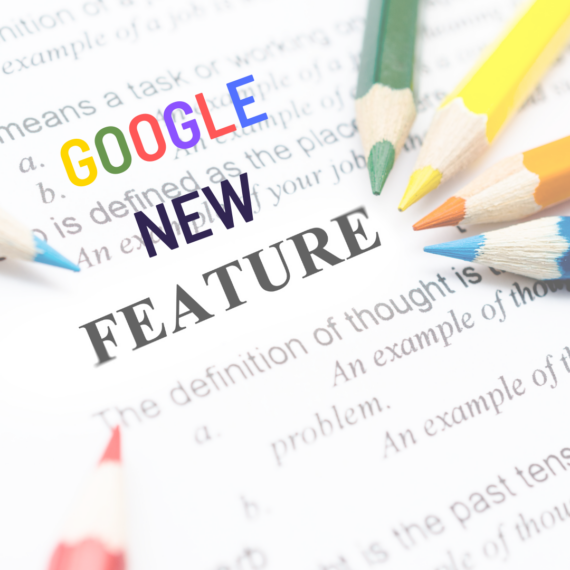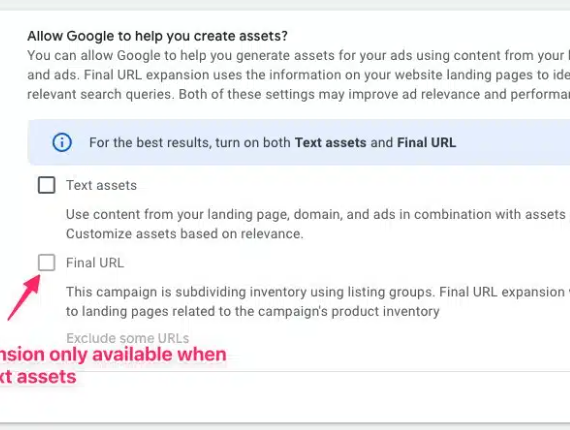Performance Max Campaigns: Unveiling Google’s Auto-Generated Ad Assets
Right Shout
In Uncategorized Posted June 19, 2023
Google, the tech giant renowned for revolutionizing the digital landscape, is unveiling a promising new feature for its Performance Max campaigns. The company is introducing an automatically created assets pilot, designed to mitigate creative fatigue among advertisers.
Recently, Performance Max users have reported the advent of the new feature, which replaces the ‘Final URL expansion’ tab. Announced at Google Marketing Live, the trial is now open to all marketers as an open beta within Google Ads.
Why is this pivotal for advertisers?

This latest innovation tackles the common problem of creative fatigue. Advertisers are now offered relief from the taxing process of consistently generating engaging ad assets for Performance Max campaigns. Thanks to Google’s automatic asset creation, the daunting task of penning appealing ad content will no longer burden marketers, saving valuable time and effort.
How does Google's new feature work?

Google’s new asset creation tool generates ad copy for Performance Max campaigns by scrutinizing the brand’s landing pages, domain content, and existing ads. The feature ingeniously extracts key themes and messages, subsequently crafting relevant ad content tailored to the brand.
The response from digital marketers has been mixed. Many are drawn to the prospect of never having to write ad assets, however, some express reservations. PPC consultant Paul Rooney warned on Twitter, “Had mixed results with automatically created assets, callouts tend to work alright, but ad copy definitely needs to be checked.”
What does Google say about the new feature?
According to Google, brands that have chosen to use the automatic ad assets feature have experienced improved results, including a 2% average increase in conversions. Additional benefits include:
Enhanced relevance: Auto-generated assets ensure a consistent user experience across the ad copy, landing pages, and user queries.
Increased productivity: With Google handling ad creation, marketers can focus on other tasks, boosting productivity.
A Google spokesperson elaborated on these benefits, stating, “Advertisers can expand the reach of their brand campaigns with new brand restrictions for broad match…This new feature will help you get the additional reach of broad match while ensuring it is only matching to relevant brand traffic that you’ve specified.”
You can run a single Performance Max campaign, but create many Assets groups to target different segments of your product catalog – a different category, or a different audience. Each asset group can be customized with different images, videos, Final URL, text, and different products.

Are there potential pitfalls?
Adding to the momentum, Microsoft Advertising also announced the launch of a new Ad Library. This tool will allow users to view all ads shown on Bing, with impressions in the European Union.
Users can explore the library using either the advertiser’s name or words used in the ad’s creative content. In line with its commitment to transparency, the Ad Library will also showcase the advertiser’s details.

While this automatic asset creation pilot holds promise, it also raises some concerns. A common issue is the potential loss of creative control. Google’s auto-generated content might not always align with a brand’s identity, or it may produce content that doesn’t make sense. These issues have caused hesitation among some marketers, deterring them from fully embracing the feature.
For advertisers with a Merchant Center feed For Performance Max campaigns with a Merchant Center feed attached, ads may be served to a URL provided in the campaign (Final URL) or to a product included in the campaign from the attached Google Merchant Center. Note : Automatically created assets can’t be applied to Shopping Ads. If automatically created assets are turned on : Search Ads may be served to additional URLs besides the provided Final URL domain.
CONCLUSION
Google’s auto-generated assets for Performance Max campaigns present an intriguing opportunity for digital marketers to combat creative fatigue. However, as with any AI-driven innovation, it’s a balancing act between convenience and customization. The key will be ensuring the auto-generated content remains accurate, relevant, and on-brand. Only time will tell how the feature will evolve to meet these challenges.
FAQs
1. What is the automatically created assets pilot in Google's Performance Max campaigns?
This is a new feature by Google designed to alleviate the burden of creative fatigue among advertisers. It automatically generates ad assets, replacing the need for marketers to continuously craft engaging ad.
2. How does Google's auto-generated asset creation work?
Google’s asset creation tool generates ad copy by analyzing the content on a brand’s landing pages, domain, and ads. It then creates relevant ad copy that aligns with the brand’s themes and messages.
3. What are the benefits of using Google's automatically created assets feature?
The benefits include enhanced relevance, as auto-generated assets provide a consistent user experience across queries, ad copy, and landing pages. Additionally, the feature increases productivity by reducing the manual work required to create relevant ad copy.
4. What is the response from digital marketers about Google's new feature?
The response has been mixed. Some advertisers appreciate the relief from constantly creating ad assets. However, others have cautioned that the auto-generated ad copy should be checked for accuracy and relevance.
5. What are the potential pitfalls of using the automatically created assets feature?
The primary concern is a reduction in creative control. The auto-generated content may not always match a product’s brand, can be inaccurate, or may not make sense. These concerns have caused some marketers to hesitate before fully adopting the feature.
6. Has Google provided any data on the performance of its automatically created assets feature?
Yes, Google has reported that brands using the feature have seen an average increase of 2% in conversions.
What Marketers Think ?
Google trials automatically created assets for Performance Max https://t.co/wjAzTEnAGH pic.twitter.com/PpvTobg8u5
— David Papp (@DavidPapp) June 14, 2023
Google trials automatically created assets for Performance Maxhttps://t.co/tKI27k2EeJ#ppcchat #esperfeed pic.twitter.com/JVOIVczz5h
— Esper Inbound (@esperinbound) June 14, 2023





